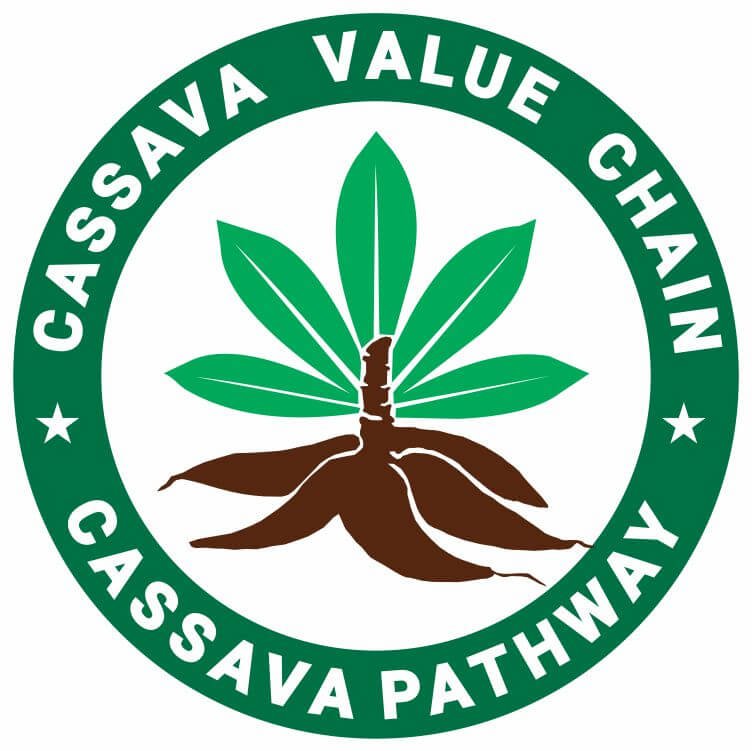Going gluten-free in America? See how cassava fits into the American gluten-free lifestyle. Also find out how cassava is changing the game with its versatility, texture, and nutrition, perfect for those seeking wheat-free alternatives without sacrificing flavor.
Yuca is making waves in the American gluten-free scene, not just as a trend but as a staple for those looking beyond wheat.
This root crop, long valued in many cultures, is finding a new home in U.S. kitchens, especially among individuals seeking gut-friendly, grain-free options.
Its mild flavor, satisfying texture, and ability to mimic wheat flour in recipes have made it a favorite among home bakers, chefs, and food manufacturers alike.
From tortillas and brownies to pizza crusts and pancakes, cassava flour is showing up everywhere.
But its appeal goes beyond flexibility; it’s naturally free from common allergens, making it ideal for those with dietary restrictions.
In this article, we’ll explore why cassava is gaining popularity and how it’s carving a space in the American gluten-free lifestyle. More on cassava as a gluten-free alternative here.
Recommended: Everything to Know about Cassava in the United States
Table of Contents
- The Rise of Gluten-Free and Cassava’s Emergence
- Why American Consumers Are Embracing Cassava
- Key Cassava Products in the American Gluten-Free Kitchen
- Culinary Applications of Cassava in Gluten-Free Recipes
- Nutritional Profile and Digestibility: A Brief Overview
- Tips for Incorporating Cassava into Your Gluten-Free Lifestyle
- Frequently Asked Questions
- Conclusion: Cassava’s Place in the American Gluten-Free Lifestyle
The Rise of Gluten-Free and Cassava’s Emergence
More people in the U.S. are switching to gluten-free diets, and cassava is stepping into the spotlight as a smart, wheat-free choice that tastes good.
The Gluten-Free Revolution: Why More Americans Are Going Wheat-Free
You’re not alone if you’ve been cutting out wheat. Across the U.S., gluten-free diets are no longer a niche choice.
For many, it’s about managing celiac disease or gluten sensitivity. For others, it’s about feeling better.
Supermarkets and restaurants are listening, and shelves are filling up with gluten-free alternatives.
But not all substitutes work well in the kitchen, and that’s where cassava begins to stand out.
It’s showing up in recipes you love and doesn’t leave you missing the real thing.
The Quest for Alternatives: The Search for Better Gluten-Free Options
Finding a gluten-free replacement that cooks and bakes well isn’t always easy.
Rice and almond flours can crumble or leave a strange aftertaste. You want something that feels and tastes close to what you grew up eating.
That’s the challenge millions face when making the switch.
People aren’t just looking for any substitute; they want ingredients that work.
Texture, taste, and reliability matter, especially in everyday cooking. Cassava flour is changing that search for many Americans.
Introducing Cassava as a Solution: A Root That’s Changing the Game
You may not have grown up with cassava, but it’s becoming a go-to for gluten-free kitchens across the country.
This starchy root turns into a flour that behaves well in pancakes, bread, and tortillas. It holds together.
It has a mild taste. And it’s naturally free from gluten, grains, and common allergens.
If you’re trying to avoid wheat without giving up real cooking, cassava flour is a game-changer.
It’s making gluten-free living feel normal, delicious even.
Related Posts
Cassava Flour Buying Guide for US Consumers
How to Grow Cassava in Florida
Why is Cassava Not Popular in the United States?
Is Cassava a Good Cash Crop in the U.S. Market?
9 Reasons Why Americans Should Take Cassava Seriously
Why American Consumers Are Embracing Cassava
Cassava is gaining serious traction in the American gluten-free lifestyle, and for good reason.
It checks boxes that other gluten-free alternatives don’t, making it a favorite among health-conscious home cooks and food product developers alike.
Better Performance Than Many Gluten-Free Flours
One of the biggest reasons cassava is winning over American consumers is performance.
Unlike many gluten-free flours that require xanthan gum or other binders, cassava flour has a natural ability to hold recipes together.
It delivers a familiar texture in breads, pancakes, and baked goods without the grainy, dry, or crumbly results typical of some other options.
Cleaner Labels and Whole Food Appeal
Cassava flour is made from just one ingredient, the whole peeled root.
That simplicity appeals to shoppers reading labels and trying to avoid additives, gums, and ultra-processed ingredients.
It’s a whole food option that fits right into the clean-eating mindset popular across American households today.
Supports Allergen-Free Cooking and Baking
Because cassava is naturally free of gluten, grains, dairy, nuts, and soy, it’s an ideal choice for people managing multiple food allergies.
It lets families cook meals without second-guessing ingredients.
More and more American kitchens are turning to cassava to simplify allergy-friendly meal planning.
Fits Paleo, Vegan, Grain-Free, and Whole-Food Diets
Cassava aligns perfectly with several popular eating styles in the U.S., including paleo, vegan, Whole30, and grain-free lifestyles.
Its ability to adapt to many dietary restrictions without compromising taste or texture makes it a go-to for people juggling multiple food goals.
Whether you’re avoiding gluten or eating more whole foods, cassava fits right in.
Key Cassava Products in the American Gluten-Free Kitchen
In the American gluten-free lifestyle and kitchen, cassava stands out as a reliable staple.
Its flour, starch, and root offer practical, wheat-free options for everyday cooking and baking.
Cassava Flour: A Go-To Gluten-Free Flour for American Bakers
Cassava flour is made from the whole peeled cassava root, dried and finely milled into a soft, light flour.
In the U.S., it’s increasingly used by home cooks and food brands as a 1:1 wheat flour substitute in many gluten-free recipes.
You’ll find it in gluten-free tortillas, pancakes, brownies, and even sandwich bread.
Compared to other flours, it offers a better texture and higher fiber content without the need for extra additives.
Its smooth finish, neutral taste, and strong binding make it a trusted flour alternative for anyone baking gluten-free in an American kitchen.
Tapioca Starch (Cassava Starch): The Texture Booster in Gluten-Free Recipes
Tapioca starch, also called cassava starch, is widely available in American grocery stores and natural food aisles.
It’s the extracted starch from cassava, prized for its thickening power and chewy finish.
In gluten-free cooking, it’s used in sauces, pie fillings, and pudding bases.
American bakers use it to improve texture in gluten-free bread, mochi-style snacks, and chewy pizza crusts.
You’ll also see it in pre-mixed gluten-free flour blends.
It gives recipes elasticity and stretch, something most other gluten-free ingredients lack, while keeping everything grain-free.
Whole Cassava (Yuca): A Starchy Gluten-Free Swap on the Dinner Plate
While not as common as flour or starch, whole cassava is popping up more in American grocery stores, especially in frozen or pre-cut form.
In U.S. households, it’s being embraced as a gluten-free side dish, similar to potatoes.
Boiled, fried, mashed, or air-fried into yuca fries, it adds variety to weeknight meals and gluten-free menus.
Popular in Latin American and Caribbean communities across the U.S., it’s a natural fit for stews, casseroles, and savory snacks.
Whole cassava provides fiber and complex carbs, giving gluten-free eaters more hearty, satisfying options at the table. More on the whole cassava root here.
Culinary Applications of Cassava in Gluten-Free Recipes
Cassava products are redefining what’s possible in gluten-free cooking.
Their adaptability makes them a favorite in kitchens across the U.S., delivering structure, texture, and taste in recipes that usually rely on wheat.
Baking Innovations: From Doughy to Delicate Without the Wheat
Cassava flour is a game-changer in gluten-free baking. It creates pliable, soft breads and tortillas that bend without cracking, something rare in gluten-free cooking.
Cakes and cookies turn out moist with a delicate crumb, while pancakes and waffles cook up light, fluffy, and golden.
Unlike many grain-free flours, cassava doesn’t overpower recipes or fall apart.
It offers home bakers the freedom to recreate favorites with a familiar texture, minus the gluten.
Savory Staples: Comfort Food Without the Compromise
Cassava shows its range in savory dishes, too. Tapioca starch thickens soups, stews, and gravies without adding a gritty feel.
It also forms crispy coatings for fried chicken, fish, or vegetables, perfect for gluten-free comfort food.
Whole cassava (yuca) replaces potatoes in fries and mash, offering a satisfying texture and subtle flavor.
These applications make cassava products everyday staples in American kitchens that need to keep meals gluten-free but still full of flavor.
Global Inspirations: Traditional Roots, Modern Plates
Cassava has long been part of traditional dishes worldwide, and now those ideas are influencing gluten-free cooking in the U.S.
Brazilian pão de queijo (cheese bread), made with tapioca starch, has become a gluten-free snack favorite.
West African fufu, made from boiled and pounded cassava, is sparking interest as a hearty side in more American households.
These global inspirations are helping shape creative, flavorful gluten-free dishes that feel both fresh and familiar.
Nutritional Profile and Digestibility: A Brief Overview
Cassava brings more to the American gluten-free lifestyle than just being wheat-free; it’s also a dependable source of nutrition and easy on the digestive system.
As a starchy root, it provides a steady supply of carbohydrates, making it a reliable energy source for those avoiding grains.
Its gentle nature means it’s often well-tolerated by people with sensitive stomachs or digestive issues.
Unlike many gluten-free products that rely on blends and additives, cassava flour and starch remain simple and clean.
Even better, cassava is naturally free from common allergens like gluten, dairy, nuts, and soy.
This makes it a safe and practical choice for families managing multiple dietary restrictions.
Whether used in baking or cooking, cassava’s digestibility and allergen-free profile make it a standout ingredient in today’s health-focused, gluten-free American kitchens. See more on the nutritional profile of cassava.
Tips for Incorporating Cassava into Your Gluten-Free Lifestyle
Cassava is easy to adopt into your gluten-free routine with a few thoughtful adjustments.
Here are practical ways to make cassava a regular part of your kitchen and cooking.
Start with Simple Swaps
For American cooks new to cassava, the easiest starting point is using tapioca starch as a thickener in your everyday meals, soups, gravies, or even holiday sauces.
It works just like cornstarch but with a cleaner taste.
Cassava flour also makes an excellent coating for crispy fried chicken or roasted veggies, giving your favorite Southern-style recipes a gluten-free twist.
Try adding it to breakfast batters for waffles or pancakes to enhance texture without changing flavor.
These small swaps help you explore cassava without giving up the comfort foods you love, while gently reshaping your gluten-free pantry.
Experiment with Recipes
In the U.S., where baking traditions run deep, cassava flour opens up new ways to enjoy classic treats without gluten.
Since it doesn’t behave exactly like wheat flour, start with cassava-specific recipes like tortillas, banana bread, or cassava-based brownies.
These dishes showcase the flour’s chewy, flexible texture and subtle earthiness.
American food bloggers, gluten-free cookbooks, and social media platforms like Pinterest now feature thousands of creative cassava recipes.
As you experiment, you’ll discover how cassava thrives in everything from Tex-Mex flatbreads to Midwestern-style casseroles, offering a reliable and tasty alternative to traditional flours.
Blending Flours
American gluten-free bakers often combine flours to get better structure and taste, and cassava fits right into this practice.
Blend it with almond flour for added protein, or with rice flour for lighter baking results.
These mixes help create better pancakes, muffins, or breaded chicken, giving structure without adding gums or artificial stabilizers.
For rustic American favorites like biscuits or cornbread, blending cassava with oat flour can bring warmth and softness.
There’s no universal ratio, test, or taste until you find your groove.
Cassava blends well and plays nice with others, making it a team player in your gluten-free lineup.
Storage Tips
In American households, where pantry space and storage climate vary, keeping cassava flour fresh is simple but important.
Store your cassava flour and tapioca starch in airtight containers in a cool, dry spot, preferably your pantry or cupboard.
If you live in a humid region, such as the South or the Pacific Northwest, consider refrigerating or freezing your cassava products for a longer shelf life.
Always check for clumping or odd smells; these are signs of spoilage.
Proper storage lets you keep cassava on hand for all your gluten-free cooking, from spontaneous weekday dinners to special holiday bakes.
Frequently Asked Questions
Why is cassava becoming popular in American gluten-free kitchens?
Cassava’s mild taste, wheat-like texture, and allergen-free profile make it ideal for U.S. households seeking easy, reliable gluten-free cooking without sacrificing flavor.
Can cassava flour replace wheat flour in American recipes?
Yes, in many cases, but it’s best to use cassava-specific recipes or blend it with other gluten-free flours for optimal texture and consistency.
Is cassava safe for Americans with multiple food allergies?
Absolutely. Cassava is naturally free from gluten, grains, nuts, soy, and dairy, making it a top pick for allergen-sensitive American families and cooks.
Where can I find cassava products in the U.S.?
Cassava flour and tapioca starch are widely available at natural grocers, online retailers, and even in mainstream supermarkets across the United States.
Conclusion: Cassava’s Place in the American Gluten-Free Lifestyle
Cassava has earned its place in the American gluten-free lifestyle by offering more than just an alternative; it delivers performance, taste, and inclusivity.
Its whole-root profile supports clean-label cooking, while its allergen-free nature meets the needs of households navigating multiple dietary restrictions.
From savory mains to sweet baked goods, cassava proves it can handle the demands of everyday American kitchens.
As awareness grows and more consumers seek out gluten-free, grain-free, or allergen-conscious options, cassava stands ready, not as a trend, but as a staple.
For anyone looking to cook freely and eat well, cassava is a root worth rooting for.

Chimeremeze Emeh is a writer and researcher passionate about Africa’s most transformative root crop—cassava. Through his work at cassavavaluechain.com, he explores the entire cassava industry, from cultivation and processing to its diverse applications in food, health, and industrial use.
He also writes for palmoilpalm.com, where he shares his extensive experience and deep-rooted knowledge of palm oil, covering red palm oil, palm kernel oil, and refined products. His work there reflects his lifelong connection to agriculture and his commitment to promoting sustainable value chains in Africa.
Driven by curiosity and purpose, Chimeremeze aims to shed light on how cassava continues to empower communities, strengthen food systems, and link traditional farming wisdom with modern innovation.

